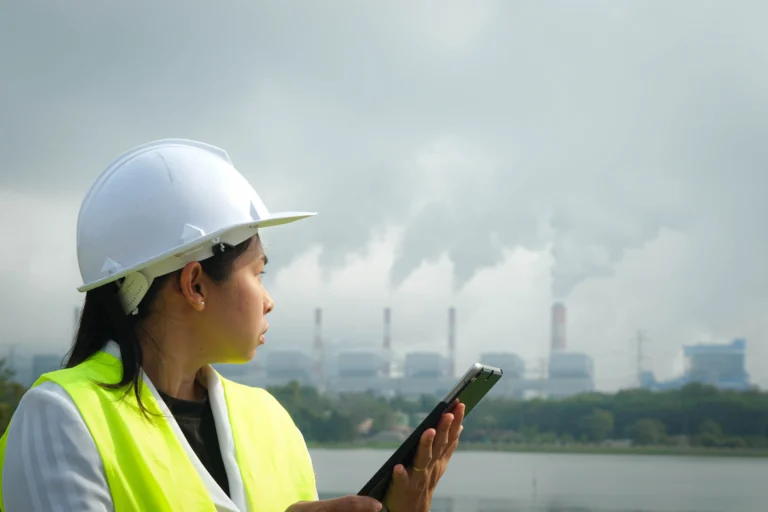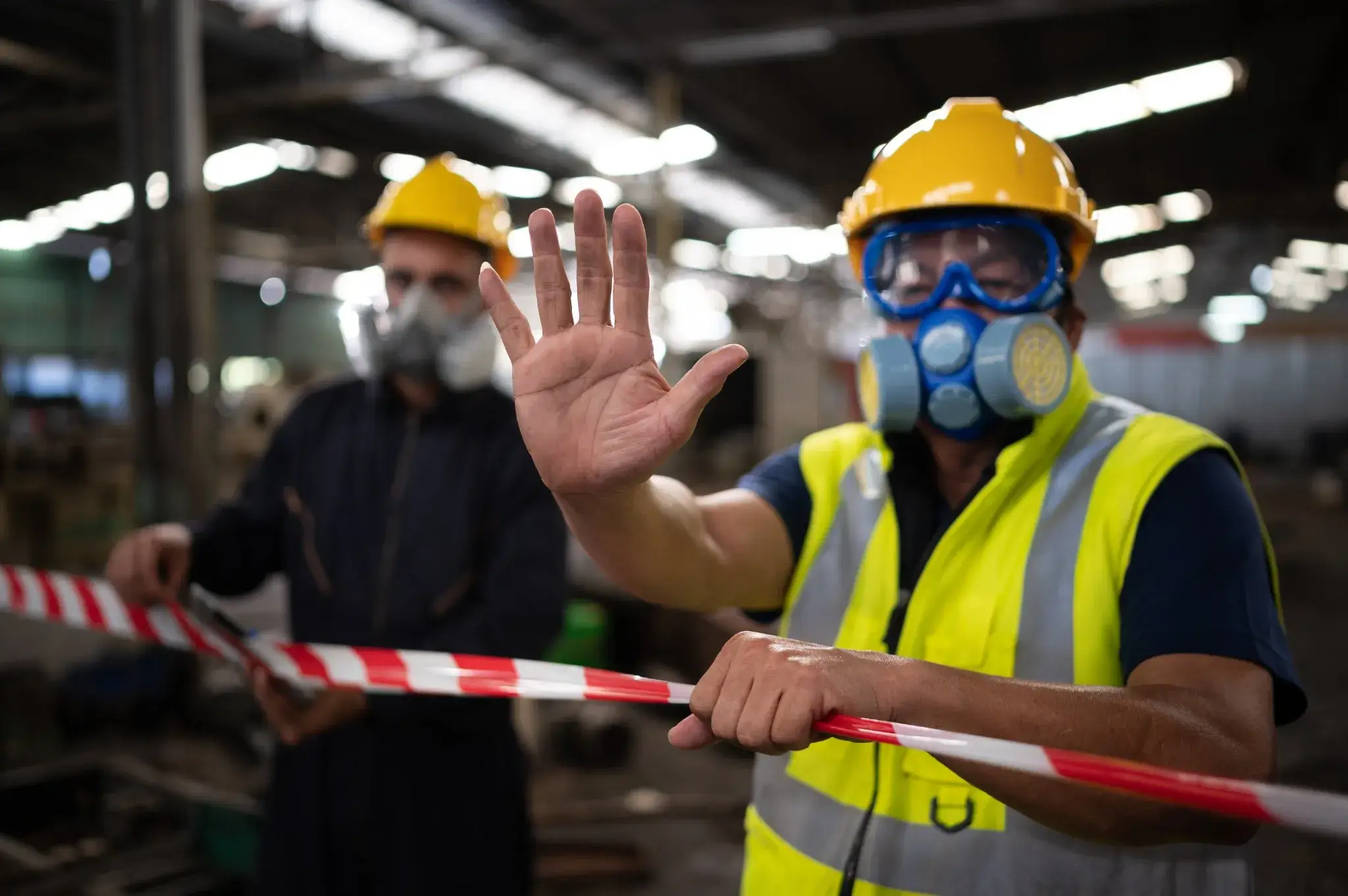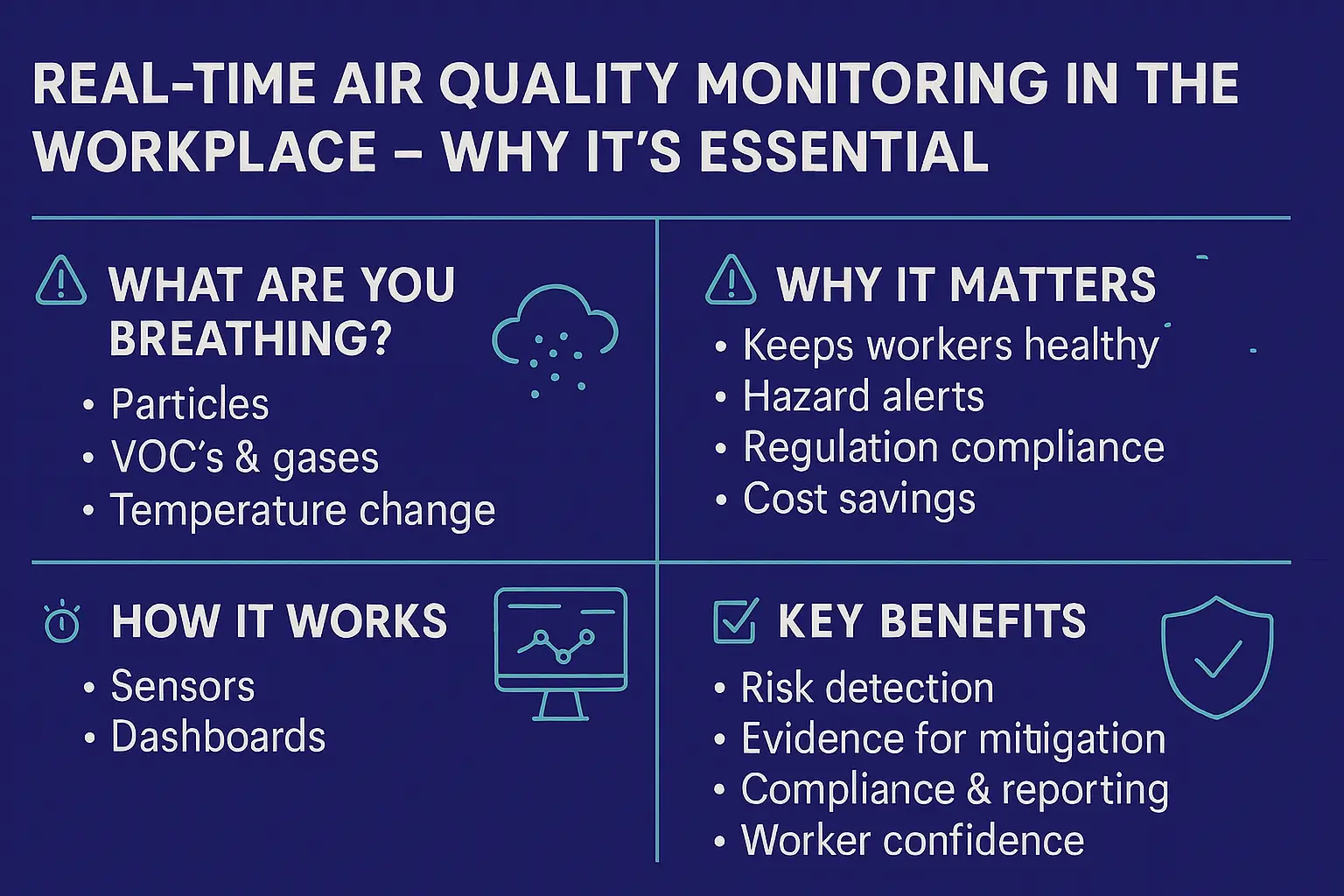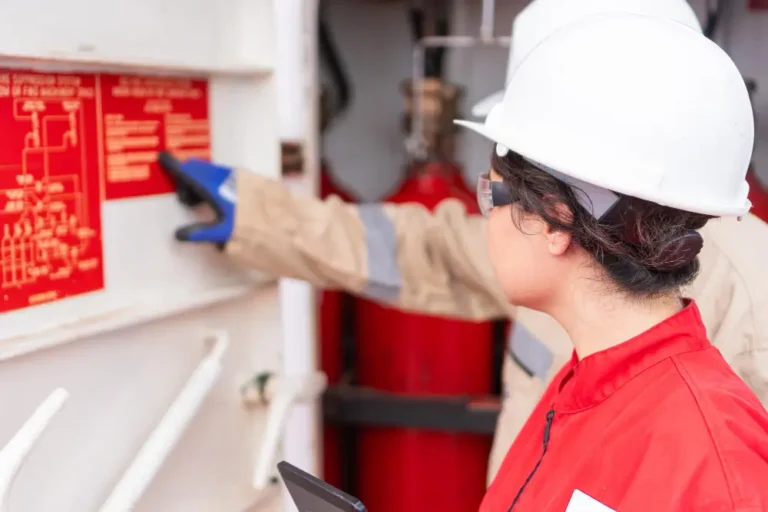TL;DR: Indoor air quality has a direct impact on employee health, safety, and business performance. Simply relying on HVAC systems or periodic checks is no longer enough. Real-time air quality monitoring provides the insights and alerts needed to avoid compliance issues, reduce sick leave, and foster a healthier, more efficient workplace.
Key Takeaways:
- Poor indoor air quality can lead to serious health risks, lost productivity, and legal exposure.
- Real-time air monitoring enables proactive safety management through continuous data and alerts.
- Modern solutions are scalable and tailored to your workspace and budget.
- Malaysian industries benefit from better compliance and operational performance with air monitoring in place.
Why It’s a Big Deal (And Not Just Hype)
Most people associate “air quality” in the workplace with HVAC systems or ventilation. However, research increasingly shows that indoor environments filled with fine particles, chemical fumes, and excess carbon dioxide can lead to serious health problems, reduce productivity, and increase legal and operational risks.
During the 2023 Canadian wildfires, many commercial buildings successfully used real-time indoor air quality monitoring systems to avoid exposing workers to harmful smoke that entered the buildings. This proved that monitoring air quality is no longer optional. It is essential for both health and business continuity.
The Hidden Dangers Lurking in Your Office
- Invisible threats: Harmful substances such as PM2.5, PM10, VOCs, carbon dioxide, and industrial gases can build up unnoticed, especially in areas with restricted airflow like printing rooms, labs, and storage zones.
- Health outcomes: Long-term exposure to poor indoor air can cause headaches, fatigue, respiratory issues, and increase the risk of chronic illnesses including asthma and heart disease.
- Productivity hits: Elevated CO₂ levels and inadequate ventilation can impair focus and increase fatigue. Over time, this leads to more sick leave, reduced morale, and lower output.
These issues are particularly relevant in environments where staff perform technical, high-risk, or prolonged tasks. Industries such as manufacturing, petrochemicals, logistics, and research require better-than-average indoor air control to protect their workforce and maintain efficiency.
How Real-Time Monitoring Works and Why It Matters
Advanced sensor tech, smart alerts
Modern workplace air monitoring systems rely on precise sensors that measure a wide range of airborne contaminants. These include:
- Particulate matter such as PM2.5 and PM10
- Volatile organic compounds (VOCs)
- Carbon dioxide (CO₂)
- Environmental conditions like temperature and humidity
These sensors gather data continuously, and when harmful levels are detected, the system issues alerts immediately. This early warning allows safety personnel to take timely action, preventing exposure risks and keeping air conditions within safe limits before any symptoms or issues occur among employees.
Data where you need it
All collected data is sent to centralised dashboards, accessible via secure cloud platforms or local networks. This gives supervisors real-time oversight, even when off-site. Historical data trends also help identify recurring issues, enabling faster and smarter decisions to reduce long-term risks.
Strong compliance and reporting
Governments and safety authorities are tightening regulations on indoor air quality. Agencies such as Singapore’s WSH and NEA now expect clear documentation that shows risk control is ongoing. Real-time monitoring provides reliable digital records and audit trails, demonstrating your organisation’s commitment to health and safety.
To see examples of available technologies that enable real-time monitoring and environmental data analysis, visit Minerva’s dedicated product page for environment monitors.
The Cost of Doing Nothing
Choosing not to implement real-time air quality monitoring puts businesses at risk of multiple negative outcomes:
- Facing penalties due to non-compliance with local or international safety regulations
- Handling legal disputes or compensation claims from staff affected by poor air conditions
- Dealing with higher turnover rates, as employees leave unsafe or uncomfortable work environments
- Failing quality or safety audits, which could result in the loss of important certifications like ISO
These consequences often lead to financial strain, reputational damage, and operational setbacks that outweigh the initial investment required to install a real-time monitoring system.
For a deeper understanding of how poor air quality impacts health and safety outcomes, read our article on how environmental monitoring reduces health and safety risks.
Common Misconceptions (and Why They’re Wrong)
“We already have HVAC systems.”
HVAC systems manage temperature and airflow but do not detect chemical pollutants or track air quality fluctuations. Without dedicated monitoring, you won’t know when the air becomes hazardous.
“We’ll just do spot checks.”
Spot checks only show air quality at a specific point in time. Conditions can shift rapidly based on room usage, equipment operation, or external pollution. Real-time monitoring delivers a complete picture and helps detect problems as they happen.
“It sounds expensive.”
Modern systems are built to scale. Many businesses start by monitoring high-risk areas and expand over time. This approach offers strong safety improvements without requiring large upfront costs.
Use Cases That Prove the ROI
- Cleanrooms and laboratories: These controlled environments require exceptional air quality to prevent contamination of sensitive instruments and experimental setups. Real-time monitoring helps maintain optimal conditions consistently, avoiding disruptions to research integrity or high-value manufacturing.
- Petrochemical facilities: Facilities handling chemicals and fuels face ongoing risks of volatile organic compound (VOC) releases. Monitoring systems detect these changes early, which supports both rapid incident response and regulatory compliance.
- Warehouses and logistics centres: In large storage areas or places with frequent vehicle activity, carbon dioxide levels can rise quickly. Monitoring helps maintain safe ventilation, reducing health risks for workers who spend extended hours in these spaces.
- Corporate offices: Office spaces with poor ventilation can accumulate carbon dioxide and other indoor pollutants. Real-time air monitoring supports staff wellbeing, reducing fatigue and improving overall productivity and employee satisfaction.
To understand why more Malaysian companies are prioritising air monitoring, visit our article on why environmental monitoring is the smartest move for Malaysian industries.
Why Choose Minerva for Workplace Monitoring
Minerva Intra Malaysia supports industries that prioritise workplace safety, environmental control, and operational efficiency. Our real-time air quality monitoring solutions are engineered to make air management easier, smarter, and more reliable.
- Custom-fit for your space: Our systems are adaptable for small rooms or large multi-zone facilities, depending on your requirements.
- Built for compliance: Every solution meets strict Malaysian and international standards, including DOSH and DOE regulations.
- Backed by expertise: We serve safety-critical industries including oil and gas, healthcare, and manufacturing, with a deep understanding of regulatory needs and technical challenges.
- Supported by people who care: Our team is committed to ongoing service, providing setup support, training, and post-installation maintenance to ensure long-term performance.
We partner with organisations throughout Klang Valley, Johor, Penang, and across Malaysia to ensure their air quality strategies are practical, sustainable, and fully aligned with their operational goals.
Book Your Site Assessment Today
Want to know exactly what your team is breathing each day? Acting before a complaint, inspection, or incident is not just proactive; it’s essential. Minerva offers professional air quality assessments and monitoring recommendations tailored to your workplace.
Contact Minerva to schedule your free workplace air quality consultation.






